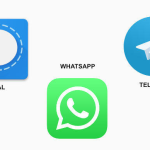Hybrid and blended learning are often used interchangeably, but they represent distinct approaches to modern education. Hybrid learning combines in-person and online instruction in a structured way, allowing students to attend classes physically while also accessing digital resources. Blended learning, on the other hand, integrates online tools with traditional teaching methods more fluidly, giving learners flexibility to engage with content at their own pace.
Understanding the differences between these models is crucial for educators, institutions, and students seeking the most effective learning strategies. By exploring the unique features, benefits, and applications of hybrid and blended learning, this guide clarifies how these approaches can enhance education, improve engagement, and support diverse learning needs in today’s dynamic academic environment.
Hybrid vs. Blended Learning: What You Need to Know
Work has evolved dramatically in recent years, with remote, hybrid, and “work from anywhere” models reshaping how teams operate. These changes, along with innovative technologies, have transformed how organizations train employees.
Understanding the difference between hybrid and blended learning is essential for designing effective training programs. Although the terms sound similar and both combine approaches, they serve different learning needs. Misunderstanding these models can lead to ineffective training strategies.
By clearly defining each approach and exploring its unique features, organizations can make informed decisions about which model fits their learning objectives and LMS strategy, ensuring meaningful development for their teams.
Read More: Teachers Worldwide Share Challenges and Joys of Reopening
What Is Hybrid Learning?
Hybrid learning is a synchronous approach that allows participants to engage in training simultaneously, both in-person and online. Its popularity has grown, with studies showing it can reduce failure rates by 20%. In a hybrid session, some learners attend physically—whether in a classroom, training room, or conference space—while others join virtually. The instructor delivers content to both groups simultaneously.
Success depends on using practical video conferencing tools, ensuring equal access, and engaging all learners. Instructors must manage technical challenges, address repeated questions from in-person participants, and foster interaction so that virtual attendees feel included. Careful preparation, seamless connectivity, and the right tools are essential for effective hybrid learning.
What Is Blended Learning?
Blended learning combines traditional instructor-led training with online, self-paced content, providing a flexible approach that suits diverse learning styles. Participants attend in-person sessions for hands-on activities, peer interaction, and real-time feedback, then supplement their learning with asynchronous online modules through an LMS or eLearning platform.
This mix of synchronous and asynchronous learning enhances engagement and commitment, enabling learners to progress at their own pace while benefiting from interactive content, such as videos, quizzes, and discussion boards. Blended learning can even include online instructor-led sessions, making it highly adaptable for modern hybrid work environments. Its flexibility and interactivity make it one of today’s most effective training methods.
Exploring the Differences Between Hybrid and Blended Learning
Learning isn’t one-size-fits-all—everyone has unique needs and preferences. Providing the right tools and methods is key to fostering growth and success. Understanding the differences between hybrid and blended learning is the first step toward creating an inclusive learning environment.
Hybrid learning balances in-person and online participation, supporting those who cannot attend physically. Blended learning integrates traditional and online methods to enhance the overall learning experience. To fully leverage these approaches, it’s essential to understand the unique benefits each model offers for learners and organizations alike.
Benefits of Hybrid Learning
Accessible: Hybrid learning ensures that both in-person and remote learners have equal access to training, making it ideal for those who cannot attend in person due to location, health, or personal reasons.
Cost-effective: Hosting all learners in a physical classroom can be expensive. Hybrid learning reduces costs for travel, venue booking, and printed materials while maintaining a high-quality learning experience.
Improves retention: Learners can engage in the way that suits them best—online or in-person—boosting participation and knowledge retention by accommodating different learning styles.
Benefits of Blended Learning
Supports diverse learning styles: Blended learning accommodates visual, auditory, and kinesthetic learners, ensuring everyone can engage with content in the way that suits them best.
Enables personalized training: Instructors can tailor online modules, activities, and assessments to individual learning needs, complementing the uniform experience of in-person sessions.
Boosts engagement: Combining interactive online content with traditional classroom learning keeps learners attentive and motivated, enhancing participation and overall knowledge retention.
Choosing the Best Learning Model for an Inclusive Environment
There’s no one-size-fits-all learning model, but organizations can select the approach that best meets their learners’ needs. Creating an inclusive environment means providing training that enables everyone to perform at their best.
Consider the work model: Reflect on your organization’s setup. Fully remote teams may not benefit from hybrid or blended learning, while hybrid workplaces can leverage both models. Traditional methods like mentoring or job shadowing can also be adapted online using LMS tools, video conferencing, and messaging apps.
Assess learning needs: Understand how employees learn, what motivates them, and any accessibility requirements. Surveys and assessments help identify the most effective approach.
Collect feedback: After implementation, gather constructive feedback through post-training surveys to evaluate the effectiveness of your chosen model.
Learning for All, Building a Brighter Future
There’s no “right” choice between hybrid and blended learning—the goal is to make education accessible to everyone. Practical, engaging, and meaningful training ensures all learners can thrive.
Choosing the right model requires thoughtful planning. Design courses, instructions, and online resources that accommodate diverse learning styles, enhance engagement, and boost knowledge retention. By prioritizing inclusivity and tailoring training to meet diverse needs, organizations can foster a learning environment that empowers every employee and supports long-term growth and success.
Frequently Asked Questions
What is hybrid learning?
Hybrid learning combines in-person and online participation in real-time, allowing learners to attend classes physically or virtually.
What is blended learning?
Blended learning integrates traditional instructor-led training with online, self-paced modules to enhance flexibility and engagement.
How does hybrid learning differ from blended learning?
Hybrid learning is a combination of synchronous and asynchronous methods, occurring both in-person and online, while blended learning combines synchronous and asynchronous methods for a flexible experience.
Which learning model is more cost-effective?
Hybrid learning reduces travel, venue, and material costs, while blended learning can optimize resource use through online content integration.
Can hybrid and blended learning improve knowledge retention?
Yes, both models accommodate diverse learning styles, increasing engagement and improving information retention.
Which model suits hybrid work environments best?
Both hybrid and blended learning work well in hybrid workplaces, depending on organizational needs and employee learning preferences.
How do I choose the right learning model for my organization?
Assess your workforce’s learning needs, work model, and accessibility requirements, and gather feedback to select the most effective approach.
Conclusion
Choosing between hybrid and blended learning isn’t about right or wrong—it’s about inclusivity and effectiveness. Hybrid learning supports real-time participation both in-person and online, while blended learning combines traditional and self-paced online methods to enhance engagement. Understanding your learners’ needs, work environment, and accessibility requirements is key to selecting the right model. By designing thoughtful and adaptable training programs, organizations can enhance knowledge retention, increase participation, and foster a learning environment where every employee has the opportunity to succeed.










